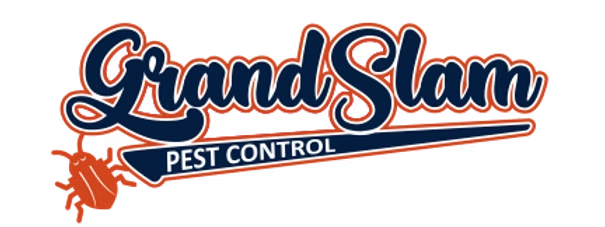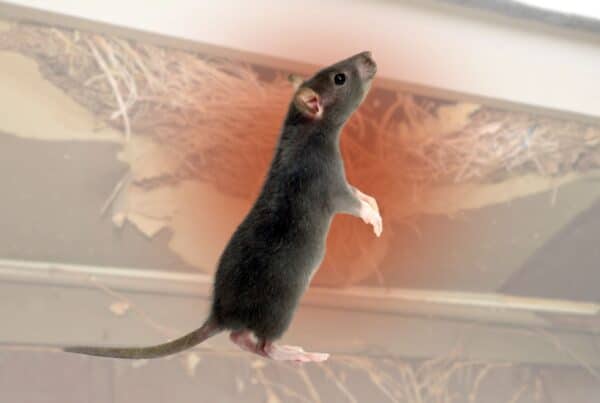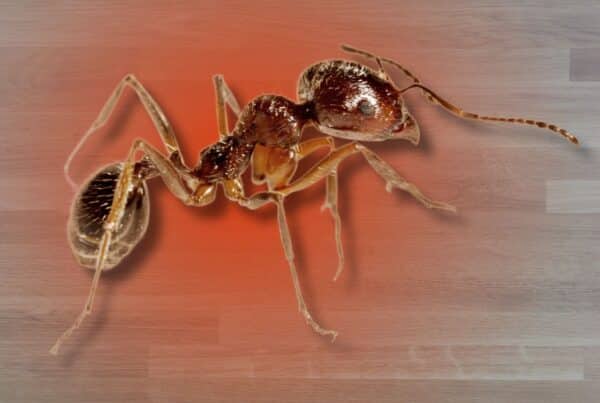Termites cause more damage to homes in Texas than almost anywhere else in the country. They don’t just show up during a certain season, and they’re not always easy to spot. But they are here, and they can cost you thousands in repairs if left untreated.
So what kind of termites are most likely to target your Texas home?
There are three main types you need to know: subterranean, Formosan, and drywood. Each one behaves a little differently, but all of them feed on wood, stay hidden, and are active across much of Texas.
Here’s how to tell them apart, what to look for, and why early detection matters.
Subterranean Termites Are the Most Common
According to the Texas Department of Agriculture, subterranean termites are the most widespread across the state. These termites return to the soil to nest and reproduce, which makes them especially hard to eliminate without professional treatment.
Once they find a food source, they bring moisture with them and quietly start feeding on anything made of wood or cellulose.
These termites are the most common and the most destructive. They thrive in moist environments, especially in crawl spaces, under slab foundations, or around plumbing leaks.
Subterranean termites alone are responsible for billions of dollars in damage each year in the U.S.
What They Look Like:
- Cream-colored workers about ¼ inch long
- Soldiers with darker heads and strong jaws
- Swarmers with wings, usually seen in spring
What to Watch For:
- Thin, mud-like tubes running up foundation walls
- Discarded wings near windowsills or door frames
- Soft or hollow-sounding wood
- Blistered paint or warped trim
These signs usually show up only after the colony has already been feeding for months.
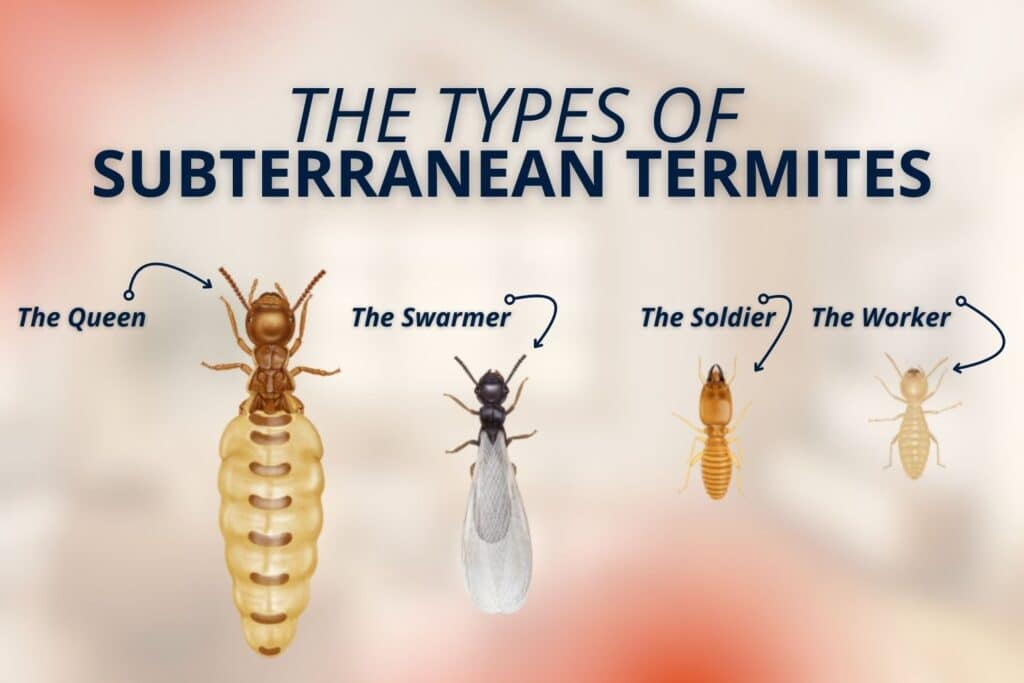
Formosan Termites Are Spreading Fast
Formosan termites are a more aggressive type of subterranean termite. They’ve been found in primarily coastal areas, but they’re spreading further inland each year.
Their colonies can grow several times larger than typical subterranean ones, with millions of termites working at once.
Formosan termites also build aerial nests and don’t need soil contact once they’re inside, which makes them a bigger threat to upper floors, attics, and wall cavities.
Warning Signs:
- Swarms of winged termites at night near lights
- Mud tunnels up exterior walls
- Strange bubbling or darkening on painted surfaces
- Sudden sagging in ceilings or drywall
If you live in an area where Formosan termites are active, yearly termite inspections are a must.
Drywood Termites Target Furniture and Framing
Drywood termites are also common. Unlike subterranean types, drywood termites can live entirely inside wood and don’t need soil contact to survive (which makes them harder to spot until damage is already done).
That means they’re often found in attics, door and window frames, hardwood floors, or even wood furniture.
Drywood termites are also more common in coastal areas, but they can show up anywhere.
Because they live inside the wood they eat, they’re harder to detect. Most people discover them by accident during remodeling or when frass starts piling up.
Signs of Drywood Termites:
- Small, hard pellets (termite droppings) that look like sawdust
- Pinholes in drywall or trim
- Buckling wood or loose baseboards
- A hollow sound when you tap on the wall
Drywood termite damage is usually slower than Formosan or subterranean types, but it can still be costly if you don’t catch it early.
Are Dampwood Termites Found in Texas?
Technically, yes, but they’re rare. These termites need constant moisture and usually live in wet, decaying wood like tree stumps, logs, or rotting fence posts.
Dampwood termites are found mostly along the Pacific Coast, parts of the Southwest, and Florida. They’re not usually a major problem for Texas homes unless there’s significant water damage or poor drainage.
Still, they’re worth knowing about if you have a leak-prone crawl space, wooden deck, or heavy mulch beds near the house!
Why Termites Love Texas Homes
Several factors make Texas a prime spot for termite activity:
- Long swarm season. Subterranean termites typically swarm from February through May. Drywood termites swarm later, sometimes into the fall.
- High humidity. Even in dry regions of the state, moisture buildup around foundations or inside walls gives termites what they need.
- Construction styles. Many Texas homes are built on slab foundations or have crawl spaces, both of which can hide early termite activity.
And since most termite damage isn’t covered by homeowners insurance, early detection is key to saving time and money.
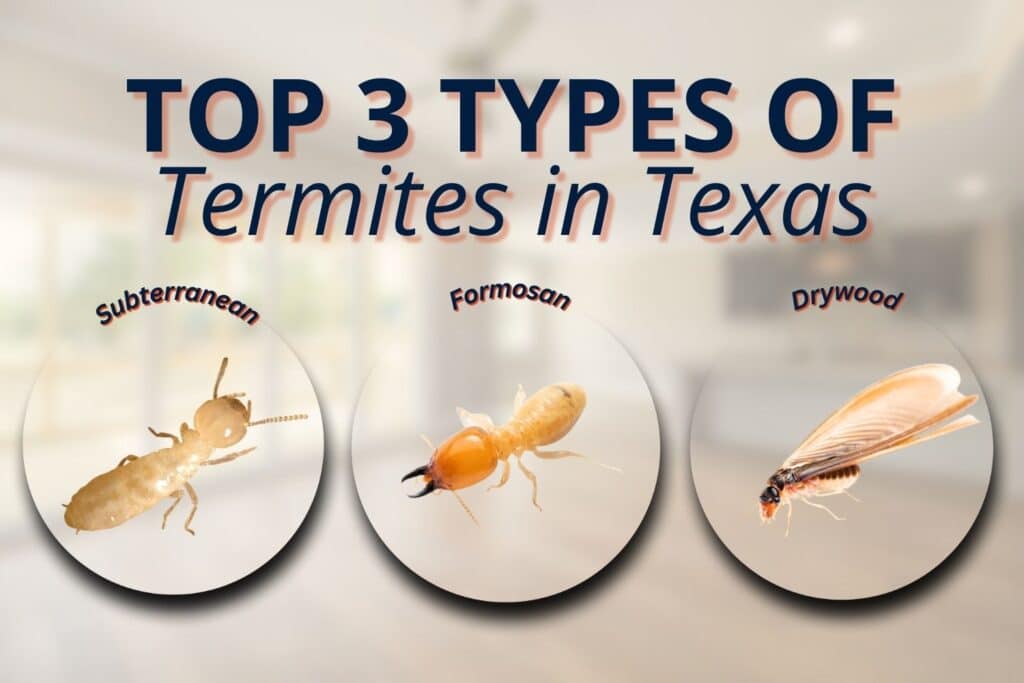
Common Questions About Termites in Texas
What causes termites to choose one house over another?
Termites (and other pests) are drawn to moisture, wood-to-soil contact, and entry points like cracks in the foundation or roofline. Homes with poor drainage, leaky plumbing, or old mulch around the perimeter are more likely to attract them.
How do I know if the damage is from termites or water?
Both can cause warped wood, bubbling paint, or soft spots in walls. But termite damage often includes mud tubes, hollow wood, or droppings that look like sawdust. A professional inspection can confirm the difference.
Is a one-time treatment enough to stop termites?
Not always. Some infestations require follow-up applications, bait systems, or annual monitoring. That’s why our termite services are designed to include prevention, treatment, and retreatment if needed for long-term peace of mind.
When to Call a Professional
If you’ve spotted mud tubes, swarmers, or frass in or around your home, don’t wait. A termite infestation grows quietly, and by the time you see damage, there may already be thousands of termites chewing through the structure.
Grand Slam Pest Control offers termite inspections, prevention plans, and full treatments for homes across Texas. Our team knows how to spot hidden signs, treat the root problem, and keep your home protected year-round.
Whether you’re seeing signs or just want peace of mind, we’re here to help.
Conclusion
Texas homes are at risk from more than one kind of termite. Subterranean termites are the most common, but Formosan and drywood termites are also a growing concern. Each one comes with its own risks, but they all require fast action and long-term prevention.
If you’re unsure what’s lurking behind your walls or under your foundation, it’s time to get answers.
Contact Grand Slam today to get pest help and protect what matters most.
